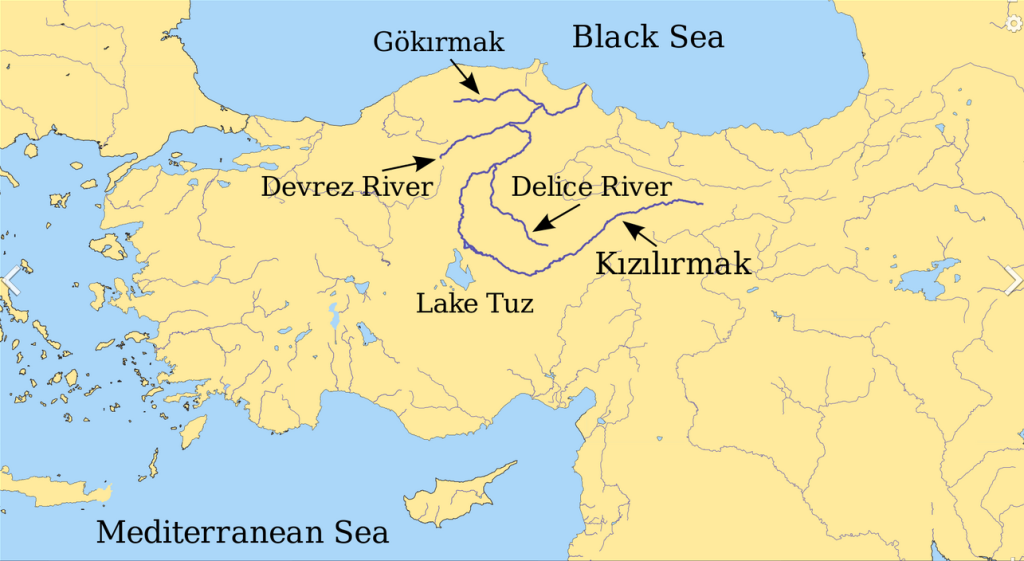Greek Roots
Pontus was a primordial, pre-olympian Greek god, son of Gaia (no father). Wikipedia says “For Hesiod, Pontus seems little more than a personification of the sea, ho pontos, “the Road”, by which Hellenes signified the Mediterranean Sea.[4]“ About 3000 years ago Greeks began exploring what we now call the Black Sea, which they named Πόντος Εὔξεινος Pontos Euxeinos (“Hospitable Sea”[2]). Their craft were essentially big rowboats with a sail to [sometimes] assist. Greeks were by no means the first peoples to live around the Black Sea coast, but they were the first to write about their travels.

Their adventures at this time became the stuff of legend – Jason & the Argonauts searching Colchis (Georgia) for the Golden Fleece, Odysseus encountering the Cimmerians, Prometheus chained to a mountain in the Caucasus. They founded colonies designed to support the mother city that bankrolled ther expedition (mostly Megara and Miletus). Odessa, Trebizond, Byzantium, and Sinope started this way. Within 500 years Greeks had founded over 70 colonies, turning Pontos Euxeinos into a Greek lake.

Gradually the word Pontus came to refer to a particular shoreline of the Pontos Euxeinos – the area in Anatolia east of the Halys [Greek name, now Kızılırmak] river

Pontus the region was a shoreline with its back to mountains, sometimes referred to as the Pontic Alps. Wikipedia labels the photo below a “Traditional rural Pontic house”. Other peoples inhabiting the area are the Laz, and the Hemshin/Hamshen – See: https://folkdancefootnotes.org/culture/ethnicity-history-geography/hemshin-hamshen-armenians-turks/

Around 2500 years ago the Persian Achaemenid Empire conquered Anatolia including Pontus, and for hundreds of years the Pontian rulers were a Greek-Persian hybrid. Pontus reached its peak of power under just such a hybrid ruler, Mithridates VI [132 BC – 63 BC], who formed a fortunate alliance with the Armenians.
Kingdom of Pontus

When the Romans finally subdued Mithridates the Great, Pontus became part of the Roman Empire.

Which evolved into the Byzantine (Greek) Empire. Below is the Diocese of Pontus, further subdivided into provinces, ca 400 AD.

Trebizond [Turkish Trabzon, here named Trapezous] became a center of culture and scientific learning. The region was secured militarily from the 11th through the 15th centuries with a vast network of sophisticated coastal fortresses.

Empire of Trebizond
Wikipedia says: Following Constantinople’s loss of sovereignty to the Fourth Crusade in 1204, the Pontus retained independence as the Empire of Trebizond under the Komnenos dynasty. Through a combination of geographic remoteness and adroit diplomacy, this remnant managed to survive, until it was conquered by the Ottomans in 1461 after the Fall of Constantinople itself.[23] This political adroitness included becoming a vassal state at various times to both Georgia and to various inland Turkic rulers.[24] In addition, the Empire of Trebizond became a renowned center of culture under its ruling Komnenos dynasty.[24]
Ottoman Rule
“Under the subsequent Ottoman rule which began with the fall of Trebizond, particularly starting from the 17th century, some of the region’s Pontic Greeks became Muslim through the Devşirme system. But at the same time some valleys inhabited by Greeks converted voluntarily, most notably those in the Of valley. Large communities (around 25% of the population) of Christian Pontic Greeks remained throughout the area (including Trabezon and Kars in northeastern Turkey/the Russian Caucasus) until the 1920s, and in parts of Georgia and Armenia until the 1990s, preserving their own customs and dialect of Greek. One group of Islamicized Greeks were called the Kromli, but were suspected of secretly having remained Christians. They numbered between 12,000 and 15,000 and lived in villages including Krom, Imera, Livadia, Prdi, Alitinos, Mokhora, and Ligosti.[26] Many of the Islamized Greeks continued speaking their language, known for its unique preservation of characteristics of Ancient Greek and still today there are some in the Of valley that still speak the local Ophitic dialect.”

As the Ottoman Empire began to disintegrate during WW1, Pontic Greeks sensed their time had come to become independent. “The Republic of Pontus (Greek: Δημοκρατία του Πόντου, Dimokratía tou Póntou) was a proposed Pontic Greek state on the southern coast of the Black Sea. Its territory would have encompassed much of historical Pontus and today forms part of Turkey’s Black Sea Region. The proposed state was discussed at the Paris Peace Conference of 1919, but the Greek government of Eleftherios Venizelos feared the precarious position of such a state and so it was included instead in the larger proposed state of Wilsonian Armenia. Neither state came into existence and the Pontic Greek population was subject to genocide and expelled from Turkey after 1922 and resettled in the Soviet Union or in Greek Macedonia. This state of affairs was later formally recognized as part of the population exchange between Greece and Turkey in 1923.”
Genetics of Pontic Greeks
A highly contentious question! Here are some reasonable answers https://www.quora.com/Are-Pontians-Greek
Pontic Greeks Today
An excellent article on Pontian Greeks in Greece today can be found here: http://www.bbc.com/travel/story/20190812-the-revival-of-a-second-greek-language The dance mentioned in the article is Serra, below.
A good general intro to Pontic dance: http://www.yorku.ca/facs3920/content/studentwork/group7/pontian And here: http://www.socalfolkdance.com/articles/dances_of_pontos_savvidis.htm
